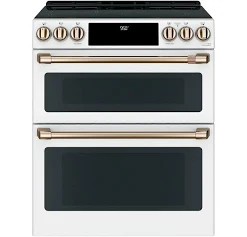
Gas Stoves, which I like, emit methane and so when the CPSC said cancel them, an uproar went up. The induction stove may be the answer if you either don’t have gas or worry about the methane.
I had been touting the benefits of my new induction stove to all my friends since I switched from gas about a year ago. Water boiled in minutes. I didn’t have to worry about the toxic fumes from the flames on my old gas range. It was a breeze to clean. Then the power went out. December storms aren’t exactly uncommon in Oregon, but our power had never been out before, let alone for an entire day. It was hard not to wonder whether 50 mile an hour winds, drenching rain, and trees downing power lines was the new normal or a random super-weather event nudged into existence by climate change. More than 71,000 homes lost power in the Portland area. With my old stove, I still could have made eggs, brewed a cup of coffee, even roasted s’mores and pretended that we were camping inside a dark and cold home. But the magic of induction, which requires a current like electric ranges, is useless during a blackout. We had no lights, no heat and no way of making a hot breakfast. So, I hit the windy roads in search of caffeine.
washingtonpost.com
To be green has its costs.
It was the first time induction cooking felt like it wasn’t such a good idea after all.Making a change for the benefit of the environment had left me at the mercy of the weather. Alas, I couldn’t cook with my conscience. Last week, after an official at Consumer Product Safety Commission suggested the agency could place restrictions on gas stoves, a lot of folks seemed to lose their minds. To some, it were as though the government had threatened to have the repo man come in the night to cart away their ranges. Conservatives saw the comments as a harbinger of inevitable liberal tyranny and vowed to fight to the death for their appliances. Meanwhile, foodies whose kitchens always seem to feature Wolf ranges (that run north of $5,000 and come with those trendy red knobs) repeated the mantra that you couldn’t really fire a steak without flames licking the pan. How bad is a little indoor air pollution, anyway?
Gas cooking has been touted as the best way to cook.
I get that some people worry the communists are coming for their microwaves next. And I get that others feel very attached to high-end status symbols and don’t like the thought of being forced to dial down the drama of a good stir fry. Thanks to years of advertising by the high-end appliance industry, gas ranges have an absurd cachet — even though most dishes can be cooked without the drama of a direct flame. (Unless, of course, you’ve spent a little too much time bingeing “Iron Chef America.”) Studies have found that gas stoves constantly leak methane (the main component of natural gas) even when they’re not on. This doesn’t just result in air pollution at levels that would be illegal outside and an increase in childhood asthma rates, it’s bad for the climate too. Natural gas might be a less polluting form of energy than coal, but it’s far from clean, and methane is one of the main contributors to climate change.
Especially since some red states say natural gas is green, it means gas stoves save the environment. Also, induction stoves will require a learning curve.
A switch to induction ranges does mean some inconvenience. Some people will need to install the proper electrical hookups. Not all pots and pans will work on cooktops that rely on magnets to vibrate the electrons in the cookware until the friction turns into heat. And, yes, they don’t work when the power goes out. But Americans have made other supposedly big changes that turned out, in the end, to be quite manageable. Remember the controversy over a switch to low-flow toilets? Or the fight over our inalienable right to a lush, green lawn? Or the hassle of switching to LED lightbulbs? Miraculously, our lives have somehow gone on. I still don’t regret switching from gas. Rather than removing heavy metal grates to clean the cooktop, I can spray it and wipe. A pot full of water now boils in minutes, less than half the time it takes on gas because of the more efficient heat transfer. I’m no longer restricted to setting burners on “low” or “medium” because an app on my phone can set them to exactly, say, 118 degrees. The only fumes I have to worry about are from the food I’m cooking. And we only had to get rid of one incompatible pan. The growing pains of making changes that are better for the environment may seem expensive or difficult, but we adapt quickly. The power went out, and I couldn’t make tea. Then, 12 hours later, it was back. I survived the interlude. And then I used the induction cooktop to make a plate of delicious crepes from scratch — a meal I could always eat cold if the power went out again.
Induction stoves are a thought if we get to a non-gas area. Consumer Reports says they are the better than both gas and electric and they have a wide range of prices and features.
